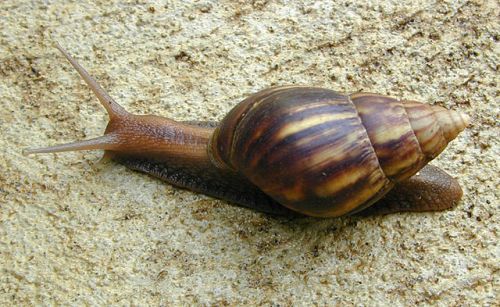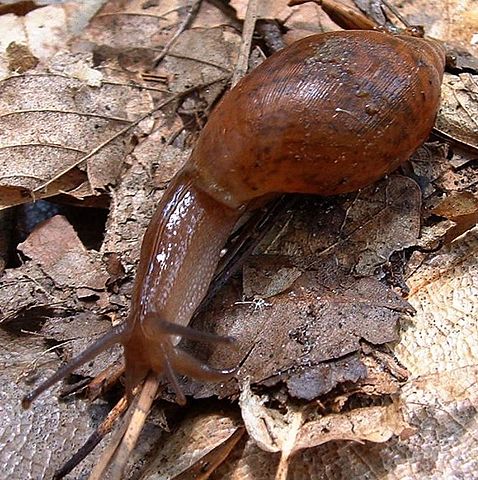by Piter Kehoma Boll
![]() For as long as life exists, it spreads. Organisms move (even if only as gametes or spores) and conquer new environments if they fit. If it wasn’t so, life wouldn’t be found all over the world. Recently, however, due to human dispersion, species are much more likely to reach places far away from where they were born. We considered a species living outside its native area as exotic. And there are a lot of them. I wonder if there is any place where no exotic species exist.
For as long as life exists, it spreads. Organisms move (even if only as gametes or spores) and conquer new environments if they fit. If it wasn’t so, life wouldn’t be found all over the world. Recently, however, due to human dispersion, species are much more likely to reach places far away from where they were born. We considered a species living outside its native area as exotic. And there are a lot of them. I wonder if there is any place where no exotic species exist.
In my first post in this blog, I talked about how exotic species are not always a threat to native ecosystems. But many of them are, indeed, dangerous to local diversity. The ISSG (Invasive Species Specialist Group) lists what are considered the 100 worst invasive species. Strangely, they fail to mention the top worst invasive species, Homo sapiens.
Among those 100 species, a very famous one is the giant African land snail, Achatina fulica. Native to East Africa, it has been introduced worldwide and is a major pest in gardens and agricultural sites, and can also be an intermediate host of several parasites that infect humans.

The giant African land snail Achatina fulica. Photo by Eric Guinther*. Extracted from commons.wikimedia.org
As an attempt to control the populations of Achatina fulica, some “genius” decided to introduce one more exotic species in the areas where A. fulica was a pest: a voracious generalist predator of land snails.
As a result, the predator snail Euglandina rosea, known as the rosy wolfsnail or cannibal snail, was introduced in areas infested by A. fulica. But E. rosea is native to North America while A. fulica is native to East Africa. In order to be effective, E. rosea had to be a generalist predator, feeding on any kind of snails. And that’s what it does…
Euglandina rosea started to prey on A. fulica, but… ops! It also attacked native land snails and led several species to extinction in Pacific Islands. It became a pest even worse than the giant African land snail…
Not satisfied by the damage caused by this predator, people decided to introduce one more species in order to control A. fulica. And the chosen one was another voracious generalist predator of land snails, the New Guinea flatworm Platydemus manokwari. As its name suggest, thee New Guinea flatworm is native to New Guinea, again a different place, and so, in order to feed on the giant African land snail, it had to feed on any kind of land snail. Thus, it became a pest as harmful as the previous one and led several species of land snails to extinction in Pacific Islands.
Until very recently it was thought that the New Guinea flatworm infestation was restricted to the Indo-Pacific Region, not so far from home. However, a recent paper by Justine et al. (2014) reports its presence in a hothouse in Caen, northern France. This report extends significantly its occurrence over the world and indicates that it may be much more spread than previously thought. Unfortunately, people are more interesting in preserving their gardens than preserving biodiversity. So those predatory pests will probably keep being introduced as biological controls, even though they pose a threat to ecosystems.

Bonjour tout le monde! I came to visit Paris! The New Guinea Flatworm Platydemus manokwari. Photo by Pierre Gros**, taken from Justine et al., 2014, via commons.wikimedia.org.
Fortunately, in France, P. manokwati seems to be restricted to greenhouses. Let’s hope that it won’t be found somewhere else.
– – –
References:
Albuquerque, F., Peso-Aguiar, M., & Assunção-Albuquerque, M. 2008. Distribution, feeding behavior and control strategies of the exotic land snail Achatina fulica (Gastropoda: Pulmonata) in the northeast of Brazil. Brazilian Journal of Biology, 68 (4), 837-842 DOI: 10.1590/S1519-69842008000400020
ISSG, Invasive Species Specialist Group. 100 of the World’s Worst Invasive Alien Species. Availabe at: < http://www.issg.org/database/species/search.asp?st=100ss >. Access on April 04, 2014.
Justine, J., Winsor, L., Gey, D., Gros, P., & Thévenot, J. 2014. The invasive New Guinea flatworm in France, the first record for Europe: time for action is now. PeerJ, 2 DOI: 10.7717/peerj.297
Sugiura, S., Okochi, I., & Tamada, H. 2006. High Predation Pressure by an Introduced Flatworm on Land Snails on the Oceanic Ogasawara Islands. Biotropica, 38 (5), 700-703 DOI: 10.1111/j.1744-7429.2006.00196.x
Sugiura, S., & Yamaura, Y. 2008. Potential impacts of the invasive flatworm Platydemus manokwari on arboreal snails. Biological Invasions, 11 (3), 737-742 DOI: 10.1007/s10530-008-9287-1
– – –
* 
This work is licensed under a Creative Commons Attribution-ShareAlike 3.0 Unported License.
** 
This work is licensed under a Creative Commons Attribution 4.0 International License.


